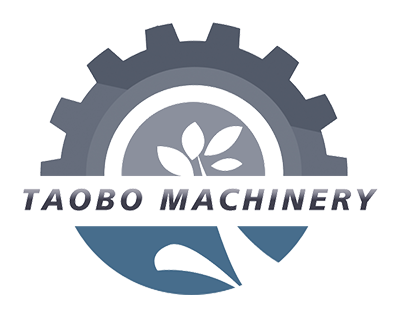
The gravity separator is a core device that uses the density differences of beans themselves (such as the density difference between plump beans and shrunken beans, insect-infested beans, and immature beans) to achieve quality grading.
The specific working process of the Taobo gravity separator: complete coffee bean quality grading in four steps
1. Step 1: Material Pretreatment – Ensure Uniform Feeding to Avoid Grading Deviations
Purpose: Removes dust and impurities from the coffee beans and spreads them evenly to prevent clumping and inaccurate grading. (If the beans are piled too thickly, the lower-density beans will be squeezed and unable to move along the correct trajectory.) Implementation Method:
Initial Cleaning: Coffee beans to be graded (typically de-stoned green beans, which have had heavy impurities such as stones and metal removed) first enter the “feed hopper.” A screen (or air separator) is installed at the hopper mouth to remove light impurities such as dust and broken bean shells. Negative pressure suction removes fine dust to prevent impurities from affecting grading accuracy.
Uniform Distribution: The cleaned coffee beans enter the “distributor”—usually an inclined guide plate with a rotating feed wheel. The feed wheel, at a steady speed (approximately 30-50 rpm), breaks up the beans and evenly spreads them into a thin layer, one or two beans thick (ensuring that each bean individually contacts the separation surface). The beans are then slowly conveyed to the inclined vibrating bed, the core component of the “gravity separation zone.” 2. Step 2: Gravity Separation – The core step, “lane movement” by density
Function: Through a combination of vibration, tilted bed, and airflow, coffee beans of varying densities are forced to move in different directions due to differences in force, achieving initial classification.
Key Components: A porous separation bed with a tilted, “low front, high back” orientation; a “high-frequency vibration motor” beneath the bed; and an airflow duct (which delivers low-pressure, uniform airflow upward from beneath the bed).
Specific Process (Core Logic):
Vibration “Thrust”: A high-frequency vibration motor drives the separation bed in a reciprocating motion, generating “thrust” along the bed’s inclination. High-density, high-quality beans, due to their large mass and inertia, overcome bed friction and airflow buoyancy, moving them in an upward, tilted direction (toward the “high-quality bean outlet” at the rear end of the bed).
Airflow “Assisted Separation”: An air duct beneath the bed blows a low-speed airflow (approximately 0.8-1.2 m/s) upward, passing through the gaps in the bed and impacting the bottom of the beans. Low-density, low-quality beans (shrunken and unripe beans) are light and have a large surface area per unit weight facing the wind. These beans are slightly “lifted” by the airflow, reducing friction with the bed. They are unable to be “pushed upward” by the vibration and instead slide along the bed’s inclination (toward the “low-quality bean outlet” at the front end of the bed).
Separation of Intermediate-Grade Beans: Some “Medium Density” Coffee beans that are slightly underdeveloped but not infested with insects will fall between high-quality and low-quality beans, moving along the center of the bed and ultimately entering the “medium-quality outlet.” Therefore, mainstream gravity machines are typically designed with two or three grading outlets, achieving a three-level classification system: high-quality, medium, and low-quality.
3. Step 3: Grading and Collection – Streaming by quality for automated storage.
Purpose: Separately collect the separated coffee beans of different grades to avoid mixing and provide standardized raw materials for subsequent processing (such as roasting and packaging). Implementation:
Under the “high-quality bean outlet,” “medium-quality bean outlet,” and “low-quality bean outlet” on the separation bed, there are separate “grading hoppers” (or conveyor belts).
Each hopper is equipped with a flow sensor that monitors the yield of each grade of coffee beans in real time. If a hopper is full, the equipment automatically issues an alert, prompting the operator to replace the container. (In large-scale plants, automated conveyor belts are directly connected below the hoppers, transporting the graded coffee beans to the corresponding storage tanks or roasting lines.)
Some high-end gravity machines also include a “secondary screening device” (such as a color sorter) after the “high-quality bean outlet” to further remove any off-color beans (such as black beans or moldy beans) that may remain among the high-quality beans, ensuring top-quality quality.
4. Step 4: Impurity Removal – Removal of Fine Debris Remaining During the Separation Process
Purpose: Removes fine debris (such as small broken beans and dust) that escaped from the separation bed, preventing accumulation that could affect equipment operation while ensuring the purity of the graded coffee beans.
The coffee bean density machine’s workflow offers three core advantages:
Precise Grading: Through the dual effects of vibration and airflow, density differences can be identified with an accuracy of less than 0.05 g/cm³.
Low Loss: With no crushing or collisions during the entire process, the coffee bean breakage rate is kept below 0.3%, preventing high-quality beans from being damaged by mechanical forces.
High Automation: The entire process, from feeding and grading to collection and waste removal, is fully automated, requiring only one or two operators to monitor the equipment, making it suitable for large-scale coffee processing plants.
The essential workflow of a gravity machine is: first, remove impurities and level the coffee, then separate by density, and finally, collect the beans by grade. Using physical means (vibration and airflow), this machine achieves the grading logic of “high-quality beans moving upward and low-quality beans moving downward,” preserving the flavor of the coffee beans while accurately selecting high-quality raw materials. It is a critical step in the transition from “primary raw materials” to “commercially graded beans.” It can be used for soybeans, mung beans, coffee beans, chickpeas, pigeon peas, sesame seeds, and other crops. Contact us now if you’re interested!
Post time: Sep-23-2025









